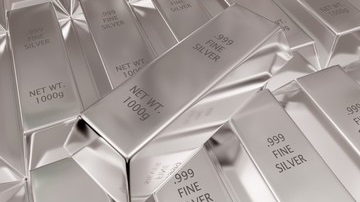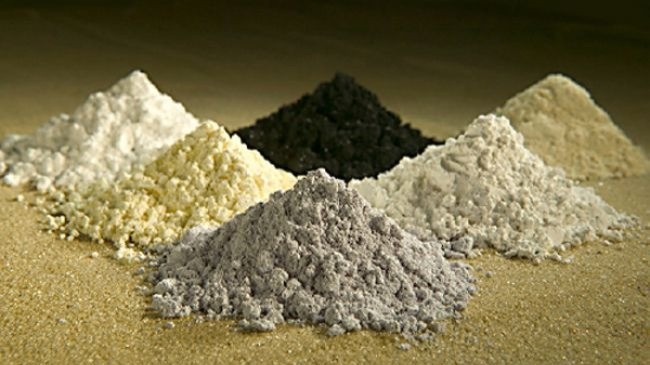Lithium: The Fuel of Energy Revolution
By Gaia Research Team.
The Gaia Research Team specializes in sustainable mining investments, focusing on responsible resource extraction. Committed to transparency and innovation, the Team aims to transform the mining sector into a more sustainable industry that benefits both the economy and the planet while addressing the huge supply and demand gap for critical minerals.
Lithium Market
Expansion of the EV Market
In 2024, the revenue in the Electric Vehicles market is projected to reach a staggering US$786.2bn worldwide.
Looking ahead, it is expected that the market will demonstrate a steady annual growth rate (CAGR 2024-2029) of 6.63%, which will ultimately lead to a projected market volume of US$1,084.0bn by 2029. with unit sales of the EV market anticipated to reach 18.84m same year.
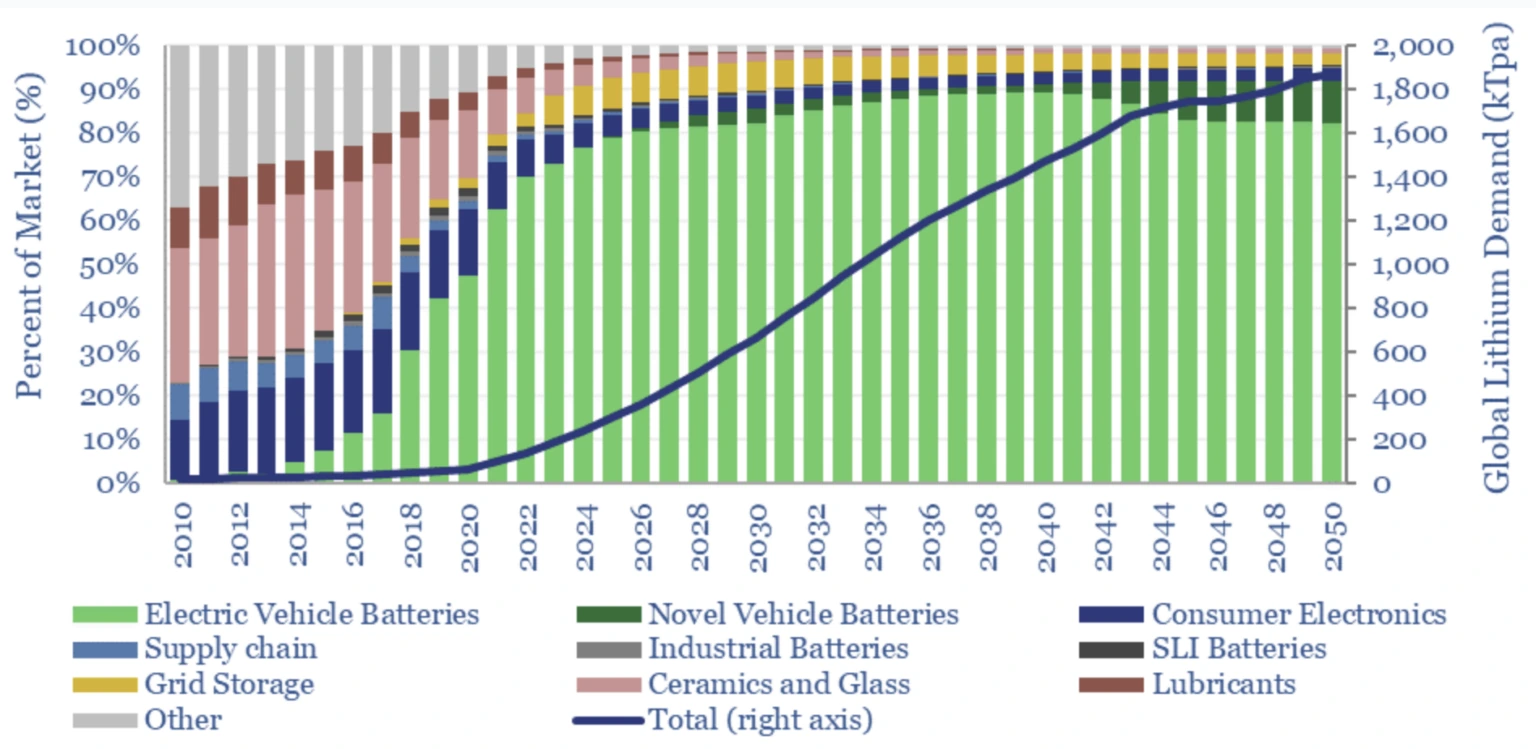
Source: Thunder Said Energy
By 2030, global lithium demand is projected to reach 3.1 million metric tons, more than quadrupling from 0.72 million metric tons in 2022. Meanwhile, supply is anticipated to only double to 1.64 million metric tons, meeting just half of the total demand. Companies capable of providing substantial quantities of lithium over the next decade will be strategically positioned to benefit from the price increases driven by this rising demand.

Source: Statista
Lithium Sources: Brine Vs. Hard Rock
Lithium is primarily sourced from brine and spodumene, which are the raw materials containing lithium respectively extracted from salt pans and the hard rock mine. These two sources have distinct extraction and processing techniques, as well as final products. Brines initially can only be processed into Lithium Carbonate – Li2CO3 (possible to convert to Lithium Hydroxide – LiOH with additional cost), while spodumene can be processed both to lithium carbonate and lithium hydroxide, the latter being mostly applied given...
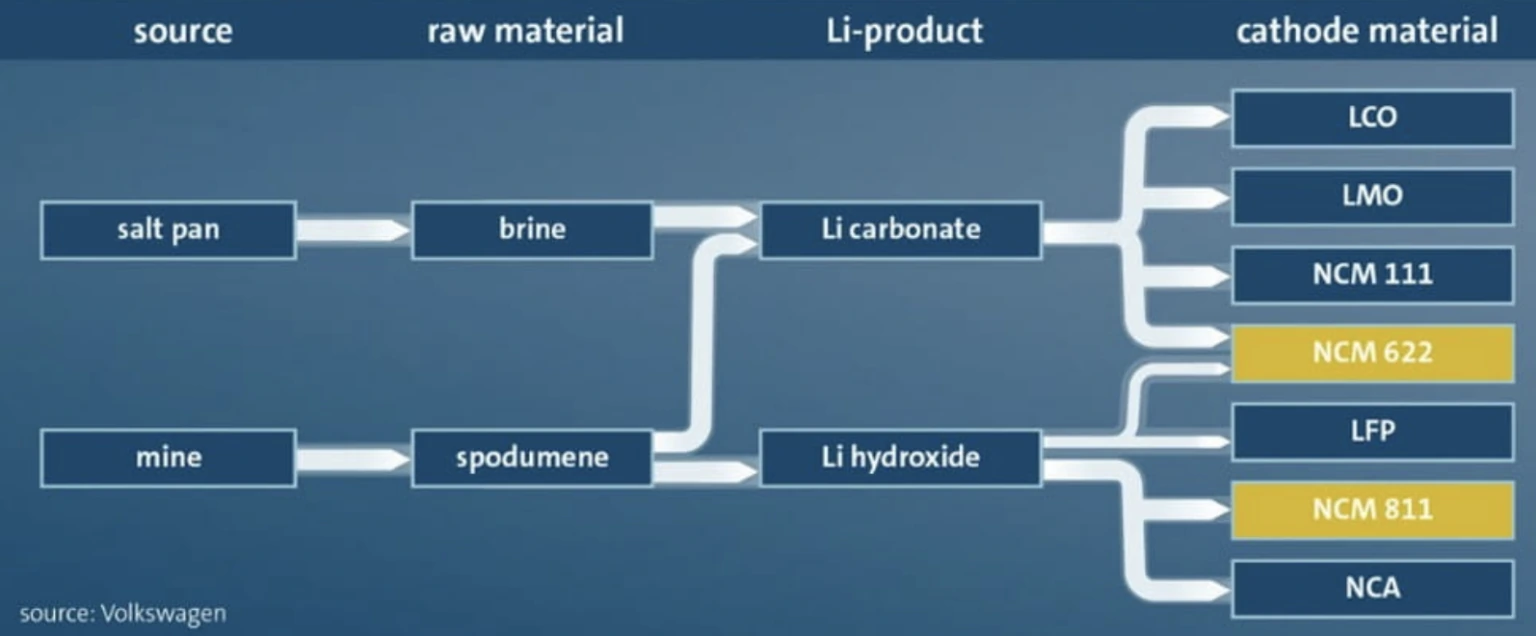
Source: New Age Metals
According to Benchmark’s Lithium Forecast, Hard rock sources of lithium, usually from spodumene deposits in Australia, currently make up 60% of the global mined lithium supply and are forecast to continue to do so through 2030, the rest 40% of the world’s lithium production comes from brine sources, primarily from South America’s “lithium triangle’’ including countries like Chile, Argentina, and Bolivia.
Market...
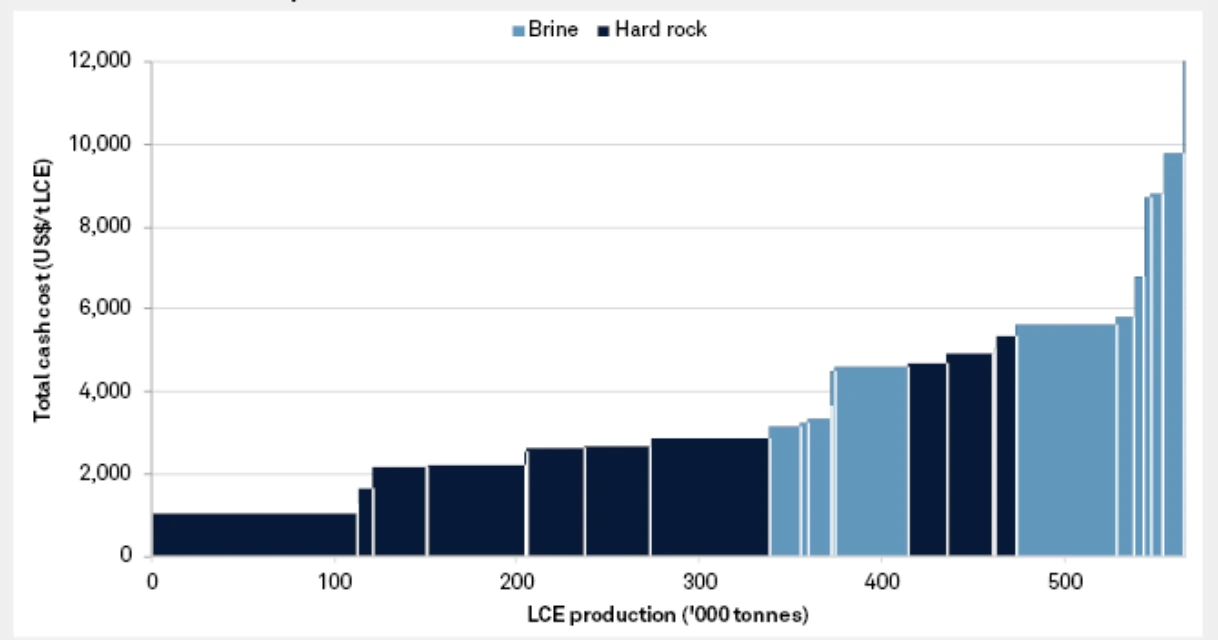
Source: S&P Global
Overall Price Trend of Lithium
The price trends for both lithium carbonate and lithium hydroxide have followed a similar trajectory. The prices began to rise sharply in early 2021, driven by increasing demand from the booming EV sector and energy storage technologies. This upward momentum continued, and the price reached its peak at the end of 2022, reflecting strong demand and supply constraints.
The market then saw a sharp decline after the peak, likely due to increasing supply and easing demand pressures. Since then the prices stabilized at a lower...
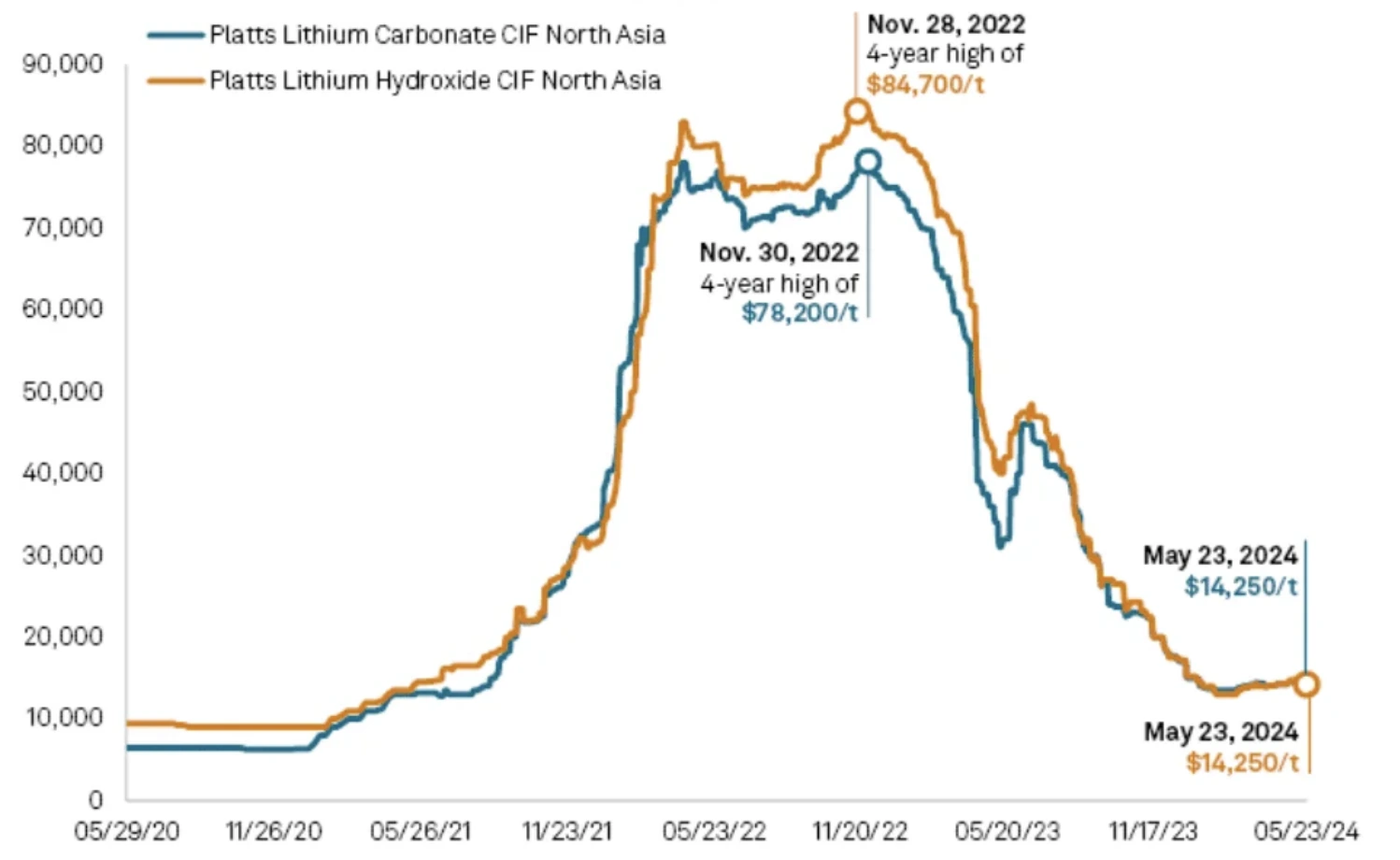
Source: Carbon Credits
A New Source of Lithium: Claystone
In addition to the two main sources of lithium, claystone presents an alternative. While brine extraction is more sustainable but has a longer processing cycle, and hard rock extraction is faster but less environmentally friendly, claystone has the potential to balance both environmental considerations and extraction time. This extraction process avoids the need for drilling and blasting, as well as the lengthy evaporation process associated with brine extraction.
However, claystone extraction has...
Company | Market Cap (USD as of 24th Sep 2024) | Project Location | Stage | Project Size (acres) | Highest Surface Lithium Grade Li (ppm) | Depth of Ore Body from Surface (meters) | Lithium Resource Size (Million tonne LCE) |
|---|---|---|---|---|---|---|---|
Rover Critical Minerals (ROVR) | 1,053,956 | LGL & Longstreet, Amargosa Valley, NV | Pre-revenue, Pre-resource (surface sampling), Drill program under permitting | 13,000 | 1,218 | <0.5 | Pre-drilling (potential: 5-10) |
American Battery Technology Company (ABAT) | 62,689,349 | Tonopah Flats, Tonopah, NV | Pre-revenue, Preliminary Economic Assessment (April 2024) | 10,340 | 882 | 4 | 14.33 |
Noram Lithium Corp. (NRM) | 9,293,645 | Zeus, Clayton Valley, NV | Pre-revenue, Mineral Resource Estimate (May 2024) | 17,320 | 770 | 10 | 5.68 |
Pan American Energy Corp. (PRNG) | 3,974,221 | Horizon, Tonopah, NV | Pre-revenue, Mineral Resource Estimate (Jun 2024) | 17,330 | 800 | 18 | 10.00 |
Comments (0)
Sign in or create a free account to leave a comment.
